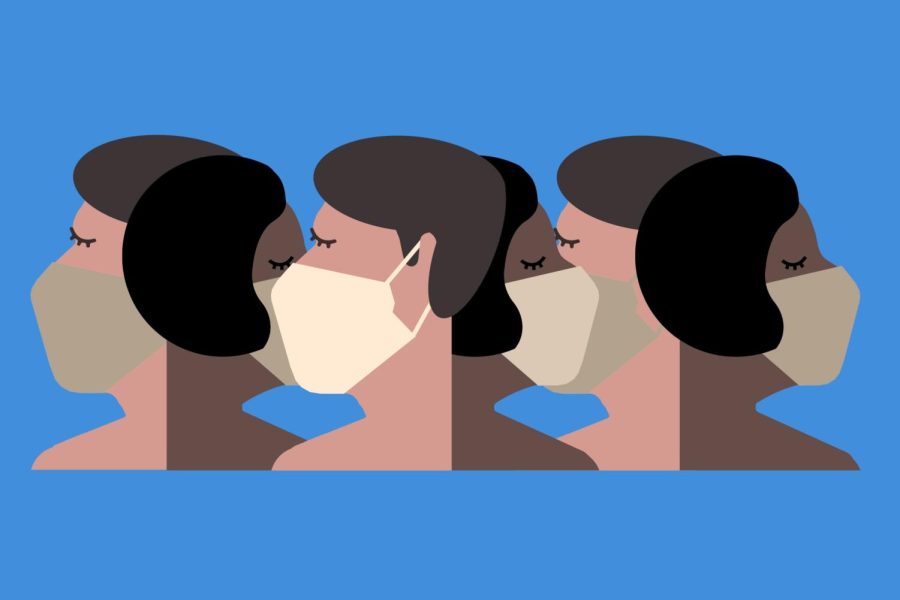There isn’t enough done to protect us from the Omicron surge
February 18, 2022
As we all know, the Omicron variant has completely changed the world throughout the last holiday season, with infection rates in early January 2022 soaring even higher than in December 2021. Although Omicron is less severe than the original variants, millions are still testing positive after Christmas and New Year’s. With the amount of people out sick, it seems as though the world is heading back toward March 2020.
Various University of California schools closed in late December and are delaying the start to in-person classes until mid or late January, depending on the case severity at the location. (latimes.com). Students are getting sick, teachers are quitting in protest due to lack of consideration of their health and well-being—there was even a teacher union strike in Chicago in early January because “conditions in classrooms were unsafe,” which led to Chicago Public Schools canceling school for more than one day, even locking teachers out of their school accounts to prevent teachers from switching to online learning. (nytimes.com).
Teacher shortages are getting more severe by the day due to low pay, spike in resignations, and a lack of respect for their health (bbc.com). We are losing the people who properly educate children in order to create a better future. November 2021 saw the highest rates of teachers leaving, with 653,000 education and health service workers exiting their respective fields. (bls.gov) It is an undeniable fact that teachers are some of the most crucial yet underappreciated individuals in our society. But why has so little been done to protect teachers and students from the coronavirus surge? Are we expected to suffer and let “survival of the fittest” play out?
The government has been doing less than the bare minimum to help people get through this pandemic. Starting Jan. 19, the Biden Administration finally announced free at-home COVID-19 rapid tests. This is, of course, great news, but why has this announcement taken so long? It is worth mentioning that each household gets a maximum of 4 tests despite the number of members in one’s family. It’s been two years into the pandemic, and other countries such as Britain, Germany, and Singapore have been distributing free at-home tests since last year (washingtonpost.com). And oh, your local CVS is probably still out of COVID testing kits, by the way.
What are we doing instead of taking actionable steps to decrease the amount of cases each day? We are casually sitting aside, doing things “normally,” and letting the virus eventually infect everyone. Although California has reinstated the mask mandate and some events require proof of vaccination, no one is effectively enforcing these requirements because it has become such a politicized issue, causing people and workers to be fearful of public backlash.
While one possible step to curb infections could be a new lockdown, this is unfortunately unrealistic for several public sectors. We, as K-12 schools, are unable to have a comfortable shut-down. Going completely online is a big change, and if schools were to close, it would impact lower-income families the most—especially those who depend on free school meals, or parents who cannot afford childcare when they are working their full-time jobs. Although almost every school provided free meals during online learning in 2020-2021, not every kid had a way to get to the schools with their parents working. Additionally, some parents cannot afford the same resources for their children to learn efficiently at home or in a convenient environment.
On top of the lack of support for public health, the government has done so little to provide a social safety net to protect families from economic shock. Sure, there have been some stimulus checks, some rent freezes. Instead of everyone “working together” to stop the spread of the virus, some government officials have taken advantage of the situation and politicized it, splitting the country. When crises like these occur, the lower-income families suffer the most, and there has been insufficient action taken to assist these underprivileged communities.
We live in a society where healthcare staff are quitting left and right (theatlantic.com) because they are extremely overworked, vaccine mandates that protect people’s health have somehow become politicized, and nobody has any general concern for each other’s well-being.
As dismal as that sounds, there are still things that can be done. We have to attack the problem at the heart instead of at the side-effects. Instead of continuing normal day-to-day activities and constantly passing relief bills, the government needs to start implementing a vaccine mandate or stronger restrictions to fight COVID-19. We must wear masks indoors and outdoors, get vaccinated if eligible, and stay vigilant. We must use our voices to contact elected officials and actively fight. This is the only way we can escape this pandemic together and at least achieve some normalcy back in this ever-changing world.








